J. Li
Enhancing Functional Data Analysis with Sequential Neural Networks: Advantages and Comparative Study
Nov 03, 2023Abstract:Functional Data Analysis (FDA) is a statistical domain developed to handle functional data characterized by high dimensionality and complex data structures. Sequential Neural Networks (SNNs) are specialized neural networks capable of processing sequence data, a fundamental aspect of functional data. Despite their great flexibility in modeling functional data, SNNs have been inadequately employed in the FDA community. One notable advantage of SNNs is the ease of implementation, making them accessible to a broad audience beyond academia. Conversely, FDA-based methodologies present challenges, particularly for practitioners outside the field, due to their intricate complexity. In light of this, we propose utilizing SNNs in FDA applications and demonstrate their effectiveness through comparative analyses against popular FDA regression models based on numerical experiments and real-world data analysis. SNN architectures allow us to surpass the limitations of traditional FDA methods, offering scalability, flexibility, and improved analytical performance. Our findings highlight the potential of SNN-based methodologies as powerful tools for data applications involving functional data.
GNCformer Enhanced Self-attention for Automatic Speech Recognition
May 22, 2023
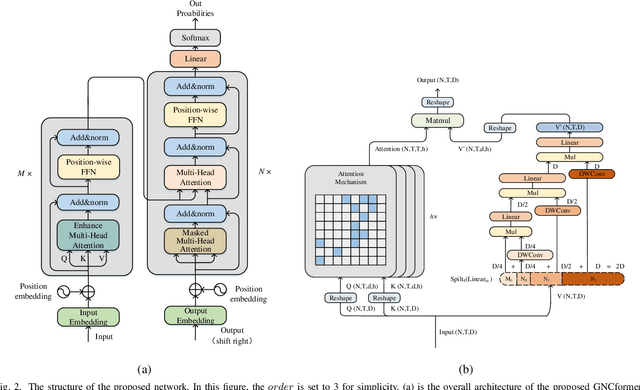
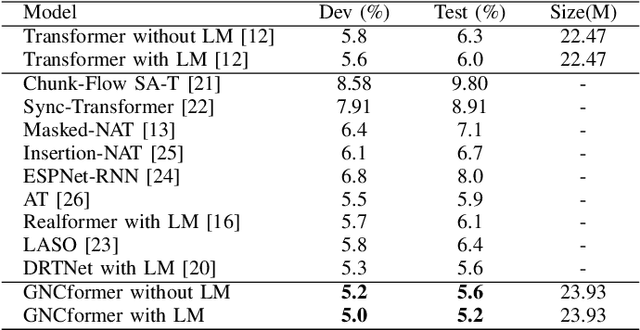
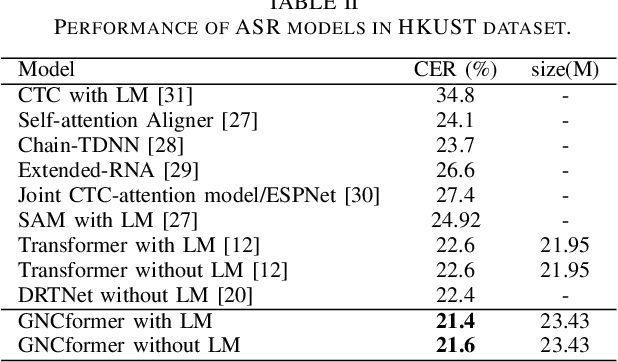
Abstract:In this paper,an Enhanced Self-Attention (ESA) mechanism has been put forward for robust feature extraction.The proposed ESA is integrated with the recursive gated convolution and self-attention mechanism.In particular, the former is used to capture multi-order feature interaction and the latter is for global feature extraction.In addition, the location of interest that is suitable for inserting the ESA is also worth being explored.In this paper, the ESA is embedded into the encoder layer of the Transformer network for automatic speech recognition (ASR) tasks, and this newly proposed model is named GNCformer. The effectiveness of the GNCformer has been validated using two datasets, that are Aishell-1 and HKUST.Experimental results show that, compared with the Transformer network,0.8%CER,and 1.2%CER improvement for these two mentioned datasets, respectively, can be achieved.It is worth mentioning that only 1.4M additional parameters have been involved in our proposed GNCformer.
An Embodied, Platform-invariant Architecture for Connecting High-level Spatial Commands to Platform Articulation
Mar 31, 2019
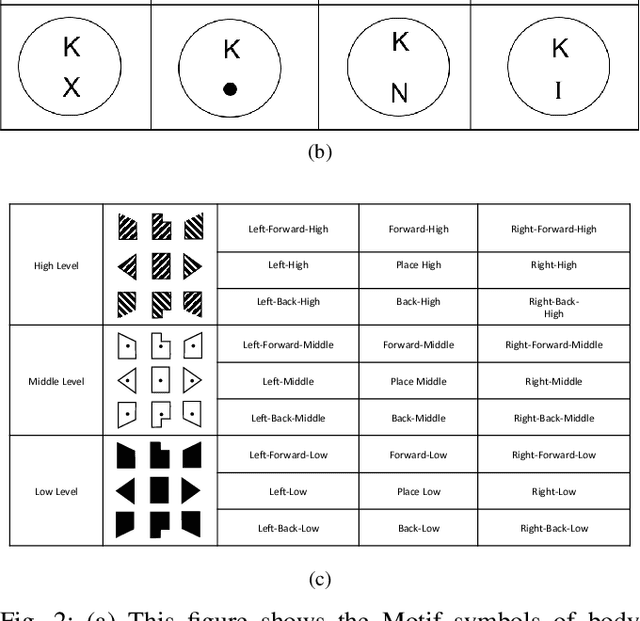

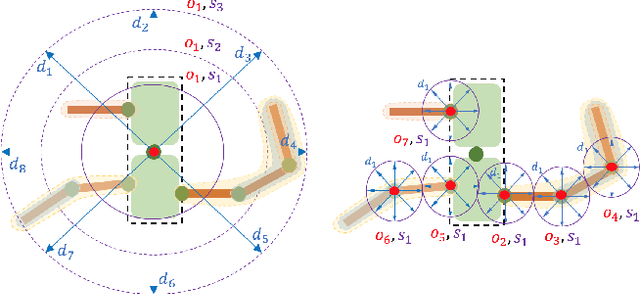
Abstract:In contexts such as teleoperation, robot reprogramming, human-robot-interaction, and neural prosthetics, conveying movement commands to a robotic platform is often a limiting factor. Currently, many applications rely on joint-angle-by-joint-angle prescriptions. This inherently requires a large number of parameters to be specified by the user that scales with the number of degrees of freedom on a platform, creating high bandwidth requirements for interfaces. This paper presents an efficient representation of high-level, spatial commands that specifies many joint angles with relatively few parameters based on a spatial architecture that is judged favorably by human viewers. In particular, a general method for labeling connected platform linkages, generating a databank of user-specified poses, and mapping between high-level spatial commands and specific platform static configurations are presented. Thus, this architecture is ``platform-invariant'' where the same high-level, spatial command can be executed on any platform. This has the advantage that our commands have meaning for human movers as well. In order to achieve this, we draw inspiration from Laban/Bartenieff Movement Studies, an embodied taxonomy for movement description. The architecture is demonstrated through implementation on 26 spatial directions for a Rethink Robotics Baxter, an Aldebaran NAO, and a KUKA youBot. User studies are conducted to validate the claims of the proposed framework.
Intelligent Automated Diagnosis of Client Device Bottlenecks in Private Clouds
Apr 26, 2012



Abstract:We present an automated solution for rapid diagnosis of client device problems in private cloud environments: the Intelligent Automated Client Diagnostic (IACD) system. Clients are diagnosed with the aid of Transmission Control Protocol (TCP) packet traces, by (i) observation of anomalous artifacts occurring as a result of each fault and (ii) subsequent use of the inference capabilities of soft-margin Support Vector Machine (SVM) classifiers. The IACD system features a modular design and is extendible to new faults, with detection capability unaffected by the TCP variant used at the client. Experimental evaluation of the IACD system in a controlled environment demonstrated an overall diagnostic accuracy of 98%.
* 2011 Fourth IEEE International Conference on Utility and Cloud Computing (UCC)
 Add to Chrome
Add to Chrome Add to Firefox
Add to Firefox Add to Edge
Add to Edge